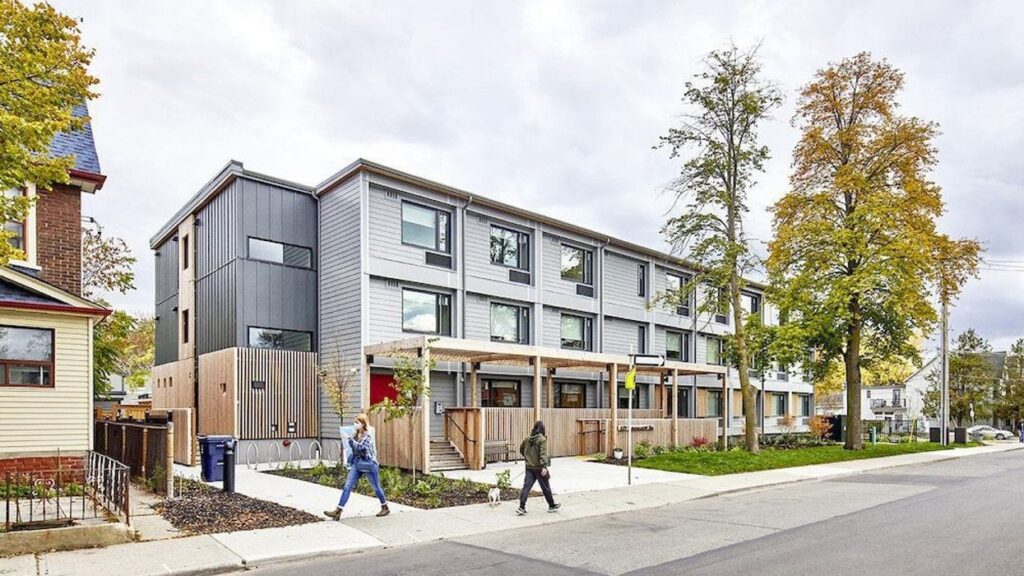
Modular Housing in Urban Planning: A Comprehensive Examination
In a rapidly urbanizing world, the concept of modular housing in urban planning is quickly becoming a game-changer. With cities growing denser and the demand for sustainable housing solutions on the rise, modular housing offers a versatile and efficient alternative to traditional construction methods. The strategic incorporation of modular housing within urban planning frameworks is a proactive step toward addressing housing shortages, reducing environmental impact, and accommodating rapid urban growth.

What is Modular Housing?
Modular housing refers to a construction process where individual, prefabricated sectionsor modulesare built off-site and then assembled on location. This method allows for greater control over building conditions and can significantly shorten construction times. The ability to construct multiple modules simultaneously also means that housing projects can scale better to meet growing demands.
Advantages of Modular Housing in Urban Planning
Speed of Construction
One of the undeniable benefits of modular construction is its speed. Off-site manufacturing allows for simultaneous site preparation and building construction, effectively cutting the overall timeline in half. This is crucial in urban settings where the need for rapidly deployable housing solutions is constant.
Cost-Effectiveness
By streamlining the construction process and minimizing labor costs, modular housing offers a cost-effective solution to traditional building methods. Many components of the process, such as purchasing materials in bulk and reducing waste, contribute to this affordability. As cities strive to provide affordable housing options, modular homes become an attractive choice.Low carbon solutions are also better achieved with modular techniques, which align perfectly with the cost-saving strategies of urban planners.
Sustainability
Environmental considerations are at the forefront of urban planning today. Modular housing makes strides in reducing the carbon footprint of residential developments. By controlling the building environment, construction waste is minimized, and the energy efficiency of modules can be rigorously maintained. With cities aiming for greener pastures, modular homes present a viable pathway towards such goals. Find out more about green modular construction here.
Design Flexibility
The customizable nature of modules allows architects and planners to experiment with different layouts and functionalities, fitting a wide array of urban settings and needs. From high-rise buildings to tiny home communities, the adaptability of modular housing is indeed a remarkable feature.
Implementing Modular Housing in Urban Areas
Site Selection
Choosing the right site is imperative for the success of any modular housing project. Urban planners must focus on accessibility, compatibility, and potential impact on local communities. Strategic site selection can maximize the benefits of modular housing, providing a sustainable and efficient solution to urban challenges.
Community Engagement
Input from residents and community stakeholders is essential in ensuring that modular projects meet local needs and respect cultural contexts. Urban planners must engage with communities to foster a sense of ownership and acceptance, ensuring that modular homes become a cherished part of the urban fabric.
Regulatory Considerations
Understanding local building codes and zoning regulations is vital. Though modular housing is gaining traction, it still faces logistical and legal challenges that planners must navigate to ensure comprehensive integration into existing urban environments.
Challenges and Solutions
Overcoming Skepticism
Public perception remains one of the greatest hurdles for modular housing. Many still view it as lesser than traditional builds. However, ongoing education, showcasing successful projects, and engaging public discussions can shift perceptions positively. Discover more about overcoming misconceptions about tiny modular homes.
Addressing Technical Issues
Any emerging technology faces growing pains, and modular housing is no different. Logistical issues such as transportation of modules and ensuring structural integrity during assembly are particularly pertinent challenges.
The Future of Modular Housing in Cities
Technological Innovations
Advanced technology is reshaping how we build. Future modular homes will likely integrate more smart home features and renewable energy systems, driving down operating costs while enhancing living comfort.
Global Adoption Trends
Cities worldwide are beginning to understand the potential benefits of modular housing. From Europe to Asia, nations are investing in modular technology as a part of long-term urban planning solutions. A comprehensive examination of these trends is available at Futures Platform.
Conclusion
The introduction of modular housing in urban planning marks a transformative moment in the future of residential communities. Meeting the increasing demands of a growing urban population requires innovative solutions, and modular housing provides a flexible, sustainable, and efficient answer. As global adoption continues to rise, this method will undoubtedly play a pivotal role in shaping the cities of tomorrow.

FAQs
Is modular housing more environmentally friendly than traditional construction?
Yes, modular homes are designed to be more energy-efficient, and the control of building environments significantly reduces waste.
Can modular housing be customized?
Absolutely. Modular homes offer high levels of customization, allowing various architectural styles and configurations to suit urban needs.
Are modular homes recognized by building codes?
While codes may vary, most regions are adjusting to include regulations that allow for modular housing, ensuring they meet safety standards.
This article contains affiliate links. We may earn a commission at no extra cost to you.